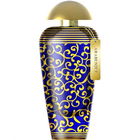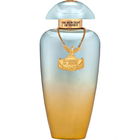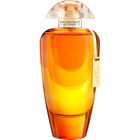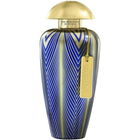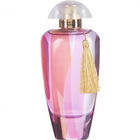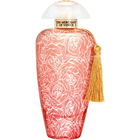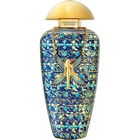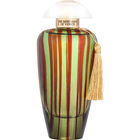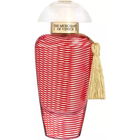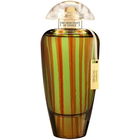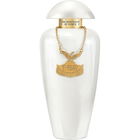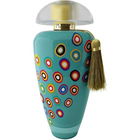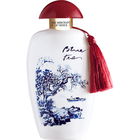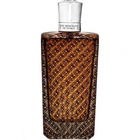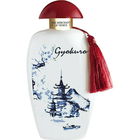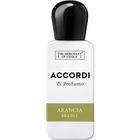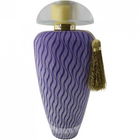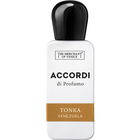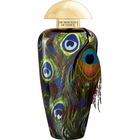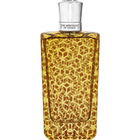Good evening, you fragrance fanatics :)
Tonight, I come to you with the scent “Rococò” from the brand “The Merchant of Venice,” a brand that I really like because it offers a lot of very beautiful fragrances and they are also packaged in wonderful bottles.
For those who don’t know (ah, an opportunity to show off): Rococo is a style of art that is perhaps a bit less known by name. It appears, in contrast to Gothic or Renaissance, after the Baroque style in a somewhat shorter period between 1725 and 1783, although it was gradually replaced by Classicism starting around 1770. Characteristics of the Rococo style include curved, shell-like decorations that, while looking quite lavish and elaborate, are actually somewhat finer and more delicate upon closer inspection than the even more opulent Baroque decorations.
Okay, enough about art history, which, by the way, is far more interesting than some philistines assume or even mock just because a painting with a simple, two-colored rectangle (which, by the way, does NOT belong to the Rococo style and is rather something modern) fetched millions at an auction house! :D Think about that! In the meantime, let’s get to the scent!
The Scent:
The scent starts with a resinous-sweet incense and bergamot, which, however, comes across a bit more lime-like to me. The fruity touch is great and fits really well with the resinous beginning.
It continues sweetly, as the intensity of the sweetness slightly increases due to jasmine and cocoa. In the background, the scent has become a bit spicy, which smells nice, even though the sweet notes are initially in the foreground.
A little later, you can smell cocoa and the resins quite well, while the fruity touch has disappeared again. Since I occasionally perceive a very light almond note (which also smells a bit green), I assume this is the heliotrope. Later on, the scent, which by the way comes across very softly due to the resins, becomes a bit softer and more powdery as well as sweeter due to the tonka bean.
In the base, the incense becomes really strong for a while and is therefore the strongest note for some time, before the intensity of the incense weakens again and the scent once more balances out with resins, sweet (now also chocolatey) notes, and soft, warm fragrances. A lovely scent!
The Sillage and Longevity:
The sillage is good, but perhaps a tad too weak for a rather cold winter; however, I can’t really judge that right now. Otherwise, you are enveloped in a nice scent cloud that smells good to both yourself and others. The longevity is very long, from morning to evening the scent is noticeable on the skin with a good sillage. Moreover, you can still faintly perceive it the next morning.
The Bottle:
The blue bottle has, as always, the shape of a vase or an old-fashioned lamp and features decorations with golden lines that represent shells. Thematically, they fit with the Rococo, even though they look more modern artistically than the actual Rococo style. The umbrella-like cap is also gilded and shows the brand name at the bottom. The fragrance name is on a golden tag that hangs around the neck of the bottle. All in all, it’s, as always, a very successful and beautiful bottle.
So… that was Rococò. As I hoped but also expected, this scent from The Merchant of Venice is wonderfully crafted and very pleasant. There’s no need to fear that the scent smells like algae or shells just because Rococo is associated with shells (since the term Rococo is derived from the term for shell-like ornaments, namely Rocaille). I believe some artist went to the beach, saw shells, and thought they would make great design objects. Which is true, as patterns associated with “sea things” often look so great *sigh-I-want-to-go-to-the-sea-sigh*
Well, the scent is more suited for autumn and winter due to its sweet-spicy aroma. As an occasion, it is again one of those all-around scents that can be used both during the day and in the evening when going out. Despite sweet notes like jasmine and heliotrope, the scent still smells unisex, so the gentlemen might want to give it a try as well. It is definitely worth testing!
So… that’s it. I hope I didn’t bore you at the beginning with the little art history lesson. After all, you’re not philistines, are you? Fragrances can indeed be wonderfully regarded as art or counted as art! No? Oh, you have no idea! :D
So until then, have a lovely evening, and see you next time :)
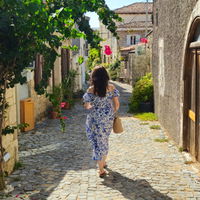






 Top Notes
Top Notes  Frankincense
Frankincense Bergamot
Bergamot Heart Notes
Heart Notes  Heliotrope
Heliotrope Clove
Clove Jasmine
Jasmine Base Notes
Base Notes  Cocoa
Cocoa Benzoin
Benzoin Tonka bean
Tonka bean




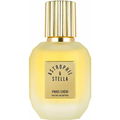



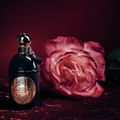


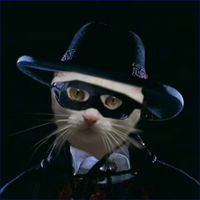

 Hermesh
Hermesh Gavarrus
Gavarrus Doublepeace
Doublepeace Jazzy76
Jazzy76 ScentsSibyl
ScentsSibyl Floyd
Floyd Pluto
Pluto Rieke2021
Rieke2021 Orodion94
Orodion94 Zerotonin
Zerotonin